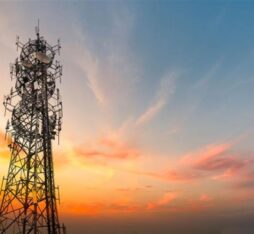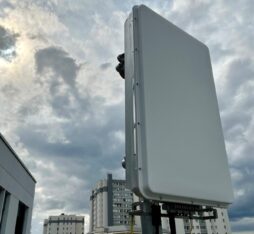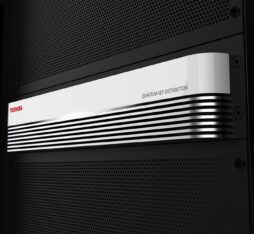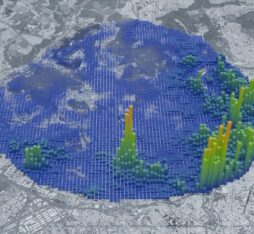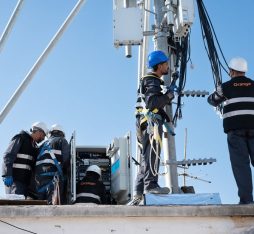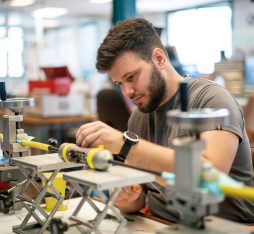• Having been released to the market, Orange’s internal tool has been a market leader for several decades. Constantly evolving, it now uses AI and crowdsourcing data.
Carriers like Orange must satisfy their customers and meet the service quality and coverage targets set by regulators. However, the propagation of electromagnetic waves used in communications is influenced by a large number of physical parameters, which differ from environment to environment. In dense urban areas, repeated reflection subdivides waves into many sub-waves, which antennas must then reassemble to receive the signal — this is why antennas are closer together in cities. With the arrival of spring in rural areas, forests cause a phenomenon called the “leaf effect”, which absorbs signals. Waves are subject to physical effects of their own in coastal areas (due to the water surface) and mountainous environments.
All of these factors have an impact on mobile network coverage and quality. To anticipate this and adapt the infrastructure accordingly, models are developed that simulate wave propagation. To design and optimise its mobile network, Orange has developed its own innovative radio propagation model.
Orange’s radio propagation model is semi-empirical — based both on precise mathematical and physical models and on data collected from the network.
State of the art
Orange’s landmark radio propagation model was born in Belfort, France, in the 90s, from the combined expertise of mathematicians, physicists and developers. Benoît Badard, Director of the radio engineering and performance department at Orange, says: “Originally developed for internal use within the Orange Group, the tool quickly attracted interest from many players in the radio engineering ecosystem. At the time, existing models were mainly academic. By contrast, this model was semi-empirical — based both on precise mathematical and physical models and on data collected from the network. The product rapidly became the world market leader.” Through licensing agreements, Orange’s model now serves 26 subsidiaries within the Group and 300 customers worldwide, including carriers, TowerCos, radio equipment suppliers, service companies, regulatory authorities and academic circles.
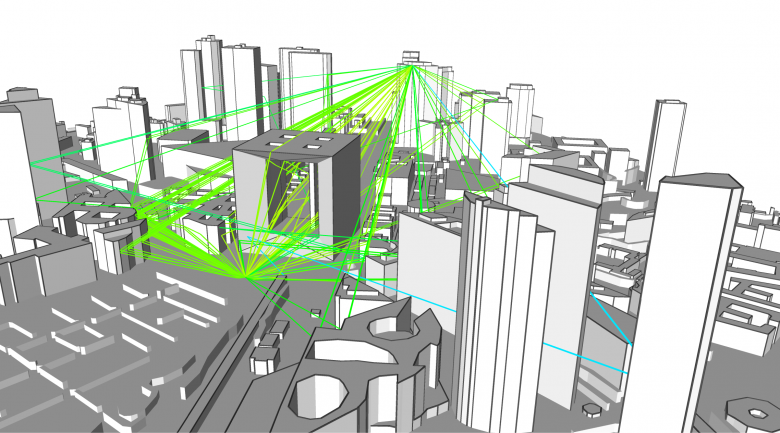
A network-structuring tool
Within Orange, these detailed models are integrated into various tools. They are a key component for developing mobile network marketing coverage maps. Orange’s model is used by radio designers day in, day out: sizing and installation for new sites, environment reconfiguration in the event of an incident, antenna parameterisation, optimisation etc. The model is even one of the technological building blocks in pre-deployment prevention of potential problems relating to EMF (electromagnetic field) exposure. Its unique selling point is its high accuracy and its ability to cover specific environments such as railways, roads, mountains and coastal environments etc., over a broad frequency band from 200 MHz to 40 GHz, covering all radio technologies worldwide.
Data, AI: The model is evolving
The mathematicians, physicists and developers are now joined by data scientists. “Because of our activity as a carrier, we have a lot of data from the operation of the network. We can pre-calibrate our model with data obtained by combining top AI models with the most suitable equations for each type of environment. Previously, calibration was done by means of drive tests: people driving around in a van taking measurements and comparing them to the simulations. By using the data reported daily, it will be possible, via automation and AI, to avoid drift effects between each calibration. In other words, the model will not only be more accurate, but also more stable over time.”

A radio future
Announced at the last Mobile World Congress, this new version of Orange’s model will be released in the fourth quarter of 2024. Teams are working to enrich this technology using AI, data and automation. They are also anticipating market trends. In line with the growth of Software as a Service (SaaS) solutions, Orange already plans to offer its model, combined with various radio design functionalities, in microservice form.





